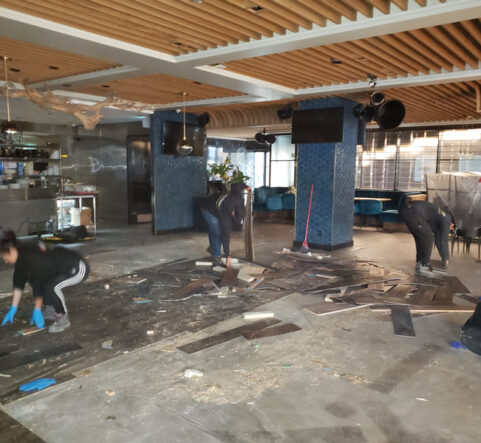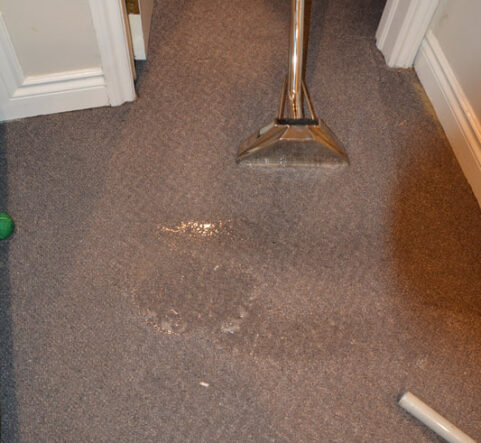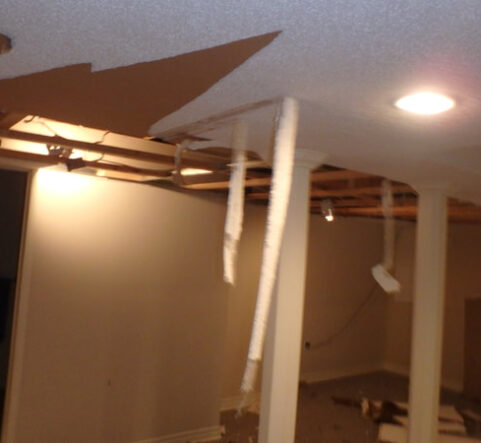Water damage can strike any property without warning, whether from burst pipes, severe storms, appliance malfunctions, or natural disasters. When it happens, quick action and a systematic approach are crucial to minimize long-term damage and prevent secondary issues like mold growth. Understanding the water damage restoration process can help property owners know what to expect and make informed decisions during a stressful time.
The Critical First 24-48 Hours
Time is the enemy when dealing with water damage. The first 24-48 hours are absolutely critical, as this is when the most significant damage occurs and when intervention can be most effective. Water continues to spread and penetrate deeper into materials, while humidity levels rise throughout the affected area. Within just hours, wooden floors can begin to warp, drywall can start to deteriorate, and the conditions become favorable for mold and bacteria growth.

Step 1: Emergency Contact and Initial Assessment
The restoration process begins the moment you discover water damage. The first step is contacting a professional water damage restoration company immediately. Many reputable companies offer 24/7 emergency services because they understand the urgency of the situation.
When the restoration team arrives, they conduct a thorough initial assessment to determine the extent of the damage and classify the water according to contamination levels. Clean water from supply lines poses the least risk, while gray water from appliances or fixtures contains some contaminants, and black water from sewage or flooding presents serious health hazards. This classification determines the safety protocols and restoration methods that will be used.
The team also identifies the source of the water intrusion and takes immediate steps to stop it if it hasn’t already been addressed. They’ll document the damage extensively with photographs and detailed notes, which is essential for insurance claims and restoration planning.
Step 2: Water Extraction
Once the assessment is complete, the focus shifts to removing standing water as quickly as possible. Professional restoration teams use powerful extraction equipment including truck-mounted and portable water extractors, submersible pumps for deep water, and wet vacuums for smaller amounts.

The extraction process isn’t just about removing visible water. Professionals use moisture meters and thermal imaging cameras to detect hidden water that may have seeped into wall cavities, under flooring, or into other structural elements. This hidden moisture can cause significant problems if left untreated, so thorough extraction is essential.
Step 3: Demolition and Removal
After water extraction, the team determines what materials can be saved and what must be removed. This decision is based on the type of water involved, how long materials were exposed, and the extent of saturation. Porous materials like carpet padding, insulation, and drywall that has been saturated often cannot be effectively dried and must be removed to prevent mold growth.
The demolition process is systematic and controlled. Team members wear appropriate protective equipment and use proper containment procedures to prevent the spread of contaminants or mold spores to unaffected areas. All removed materials are disposed of according to local regulations and safety guidelines.
Step 4: Drying and Dehumidification
With standing water removed and damaged materials eliminated, the drying process begins. This is often the longest phase of restoration, typically taking several days to more than a week depending on the extent of the damage and environmental conditions.
Professional-grade air movers, dehumidifiers, and specialized drying equipment are strategically placed throughout the affected area. Air movers create airflow across wet surfaces to accelerate evaporation, while dehumidifiers remove moisture from the air to prevent it from being reabsorbed by materials. In some cases, specialized equipment like injectidry systems are used to dry inside wall cavities without requiring demolition.
The drying process is carefully monitored using moisture meters and hygrometers to track progress. Professionals adjust equipment placement and settings as needed to ensure thorough drying. The goal is to return all materials to their pre-loss moisture content levels.
Step 5: Cleaning and Sanitizing
Once the affected area is thoroughly dry, comprehensive cleaning and sanitizing begins. All surfaces that came into contact with water need to be properly cleaned, especially if the water was contaminated. This includes walls, floors, remaining furniture, and personal belongings that can be salvaged.
The cleaning process uses antimicrobial treatments to eliminate bacteria and prevent mold growth. HEPA air filtration may be used during this phase to remove airborne particles and improve air quality. Personal belongings and furniture are carefully cleaned using appropriate methods for each material type.
Step 6: Restoration and Reconstruction
The final step involves returning the property to its pre-damage condition or better. This phase can range from minor repairs like replacing drywall and painting to significant reconstruction involving flooring, cabinetry, and structural elements.

During reconstruction, many property owners choose to upgrade materials or make improvements. Modern water-resistant materials and improved ventilation systems can help prevent future water damage issues. The restoration team coordinates with contractors as needed to ensure all work meets current building codes and industry standards.
Prevention and Preparedness
While understanding the restoration process is valuable, prevention remains the best strategy. Regular maintenance of plumbing systems, proper grading around foundations, functioning gutters and downspouts, and installation of water detection devices can help prevent many water damage incidents.
Property owners should also know the location of water shut-off valves and plan to respond to water emergencies. Keeping important documents in waterproof containers and having contact information for restoration professionals readily available can save valuable time when every minute counts.
Working with Insurance
Proper documentation throughout the restoration process is essential for insurance claims. Reputable restoration companies work closely with insurance adjusters and understand the documentation requirements. They can help property owners navigate the claims process and ensure that all necessary work is covered.
It’s essential to contact your insurance company as soon as possible after discovering water damage, even before the restoration team arrives. Many policies have specific requirements for reporting timeframes and may require approval for certain restoration activities.
Conclusion
Water damage restoration is a complex process that requires expertise, specialized equipment, and systematic execution. While the process can seem overwhelming, understanding these steps helps property owners know what to expect and why each phase is important. The key to successful restoration lies in acting quickly, working with qualified professionals, and following the process through to completion.
Remember that attempting to handle significant water damage without professional help often leads to incomplete drying, hidden moisture problems, and costly issues, including mold growth and structural damage. When water damage occurs, the investment in professional restoration services typically pays for itself by preventing more extensive and expensive problems in the future.
Need A Restoration Company in the Toronto Area?
Call 416 Restoration
1-416-400-5632
416 Restoration Gallery